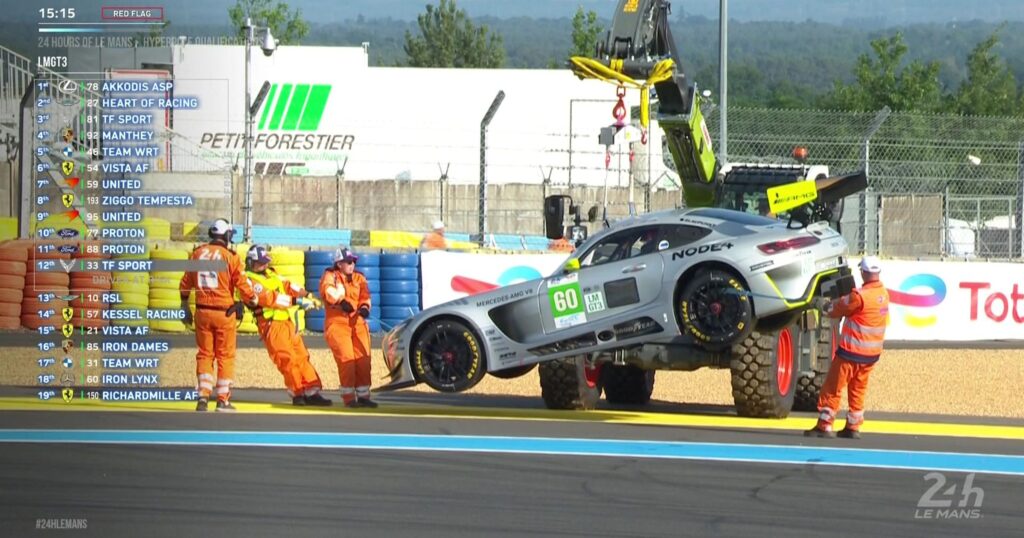The 24 Hours of Le Mans is one of the most prestigious endurance racing events globally, attracting teams, manufacturers, and motorsport enthusiasts alike. Races in such a high-stakes environment not only test the limits of the vehicles but also challenge the teams’ tactical strategies and driver endurance. However, as seen recently during the qualifying rounds, unforeseen complications can arise at any moment, adding an unexpected twist to the race’s narrative.
One such incident occurred with the Iron Lynx team, which is known for its competitive spirit and precision in racing. During the qualifying session for the much-anticipated 24 Hours of Le Mans, the team encountered a significant issue which ultimately led to a red flag being called. This interruption can alter the momentum of the qualifying day, and it raises questions about the car’s performance and the team’s readiness for the main event.
The trouble stemmed from a fuel-related problem that impaired Iron Lynx’s ability to complete crucial laps effectively. Fuel management is critical in endurance racing not only for efficiency but also for safety. In this case, the problem likely stemmed from either a mechanical failure or a miscalculation in the car’s fueling strategy. When such an issue manifests, it can prevent a driver from achieving optimal times in the qualifying session, putting the team at a competitive disadvantage.
The red flag serves as an official signal that all cars must cease on-track activity. During this time, safety personnel assess the situation, and any necessary repairs or investigations are initiated. For the Iron Lynx team, this unexpected interruption will require swift action to diagnose the issue and implement a solution to ensure that their car is race-ready before the start of the 24-hour endurance battle. The team’s performance in the qualifying rounds is crucial; it determines their positioning on the grid and can significantly dictate the race strategies employed on race day.
In preparation for the main event, teams often create comprehensive plans to address potential issues based on their performances in the qualifying sessions. A fuel-related problem can lead to longer pit stops during the race, a factor that can severely affect total race time and overall standings. Hence, the team must not only remedy the problem but also ensure that their pit strategies account for this complication, allowing them to maintain competitiveness throughout the race.
Racing in Le Mans is relentless, and the atmosphere is charged with anticipation as teams await the outcome of such incidents. Fans and industry insiders closely monitor how teams adapt and respond to adversity, contributing to the drama and excitement surrounding the event. The importance of resilience in motorsport cannot be understated; it often separates the contenders from the victors.
Furthermore, incidents like the one experienced by Iron Lynx underscore the intricate relationship between technology, engineering, and human skill in racing. Teams constantly explore innovative solutions and advanced practices to optimize vehicle performance and mitigate risks. Engineers work around the clock in the paddocks, analyzing data, and conducting tests to ensure that such issues are minimized.
In conclusion, the recent red flag incident during the qualifying session of the 24 Hours of Le Mans is a reminder of the unpredictable nature of motorsport. It offers a glimpse into the challenges teams face, particularly in endurance racing, where every second counts. For the Iron Lynx team, overcoming this hurdle will be pivotal not only for their qualifying performance but also for their chances in the race itself. As this revered event unfolds, fans will undoubtedly keep a close watch on how effectively the team can rally from this adversity, showcasing the tenacity and determination that is a hallmark of the 24 Hours of Le Mans.



